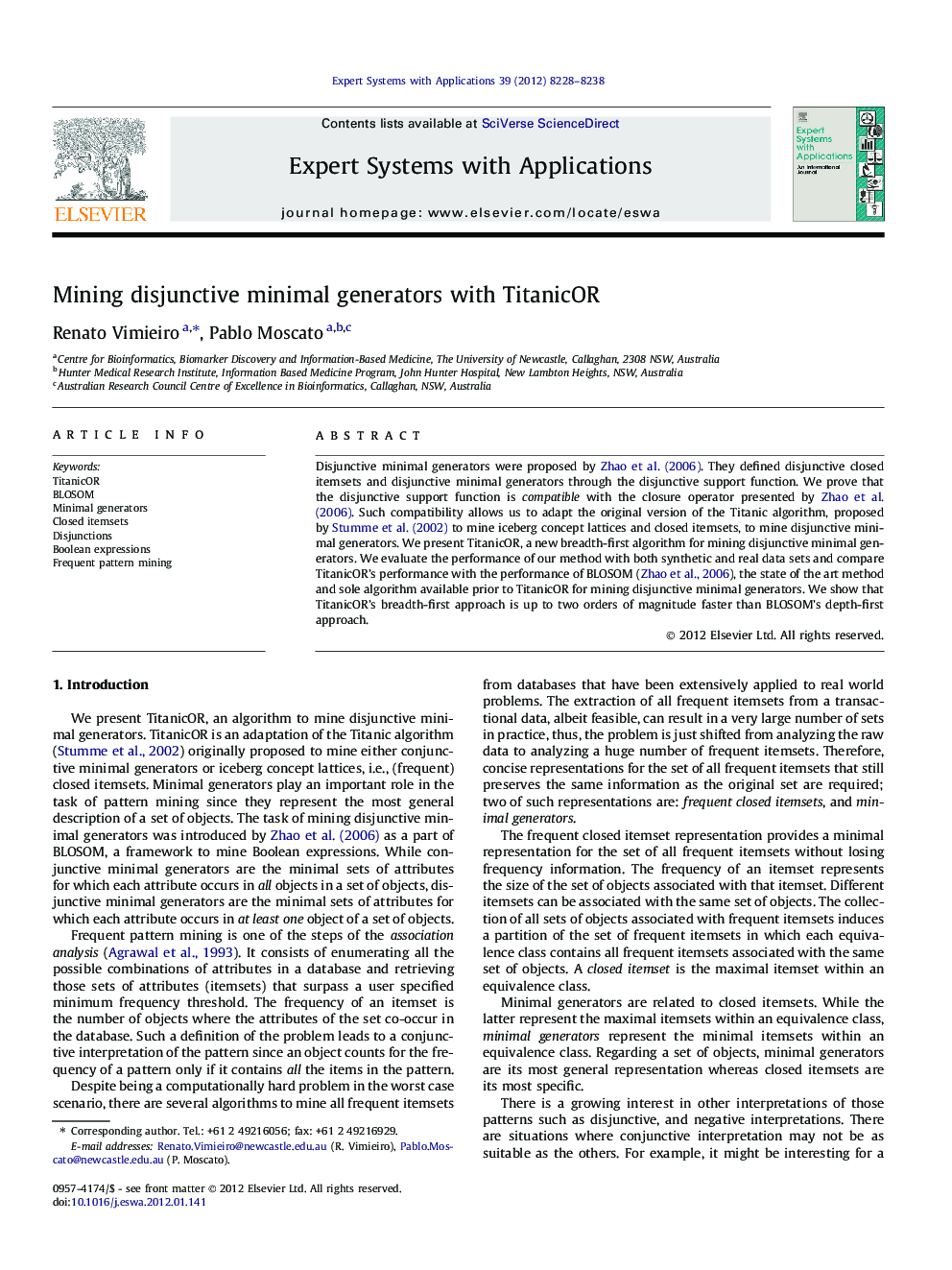| Article ID | Journal | Published Year | Pages | File Type |
|---|---|---|---|---|
| 384160 | Expert Systems with Applications | 2012 | 11 Pages |
Disjunctive minimal generators were proposed by Zhao, Zaki, and Ramakrishnan (2006). They defined disjunctive closed itemsets and disjunctive minimal generators through the disjunctive support function. We prove that the disjunctive support function is compatible with the closure operator presented by Zhao et al. (2006). Such compatibility allows us to adapt the original version of the Titanic algorithm, proposed by Stumme, Taouil, Bastide, Pasquier, and Lakhal (2002) to mine iceberg concept lattices and closed itemsets, to mine disjunctive minimal generators. We present TitanicOR, a new breadth-first algorithm for mining disjunctive minimal generators. We evaluate the performance of our method with both synthetic and real data sets and compare TitanicOR’s performance with the performance of BLOSOM (Zhao et al., 2006), the state of the art method and sole algorithm available prior to TitanicOR for mining disjunctive minimal generators. We show that TitanicOR’s breadth-first approach is up to two orders of magnitude faster than BLOSOM’s depth-first approach.
► We present a new algorithm for mining disjunctive minimal generators. ► Disjunctive minimal generators are new interpretations of itemsets. ► Our approach is two orders of magnitude faster than the state of the art. ► We conclude that the breadth-first approach is more suitable for minimal generators.
